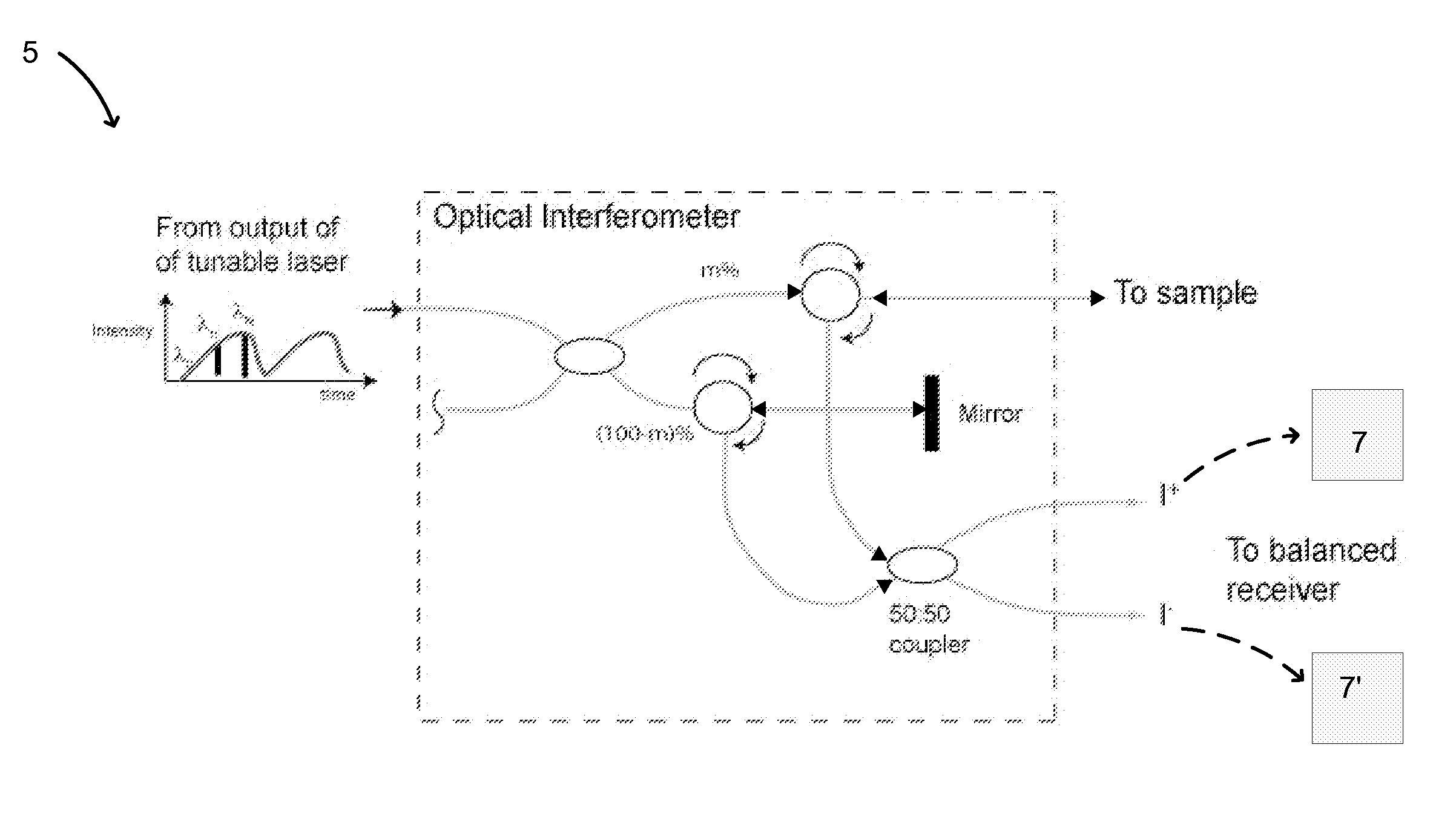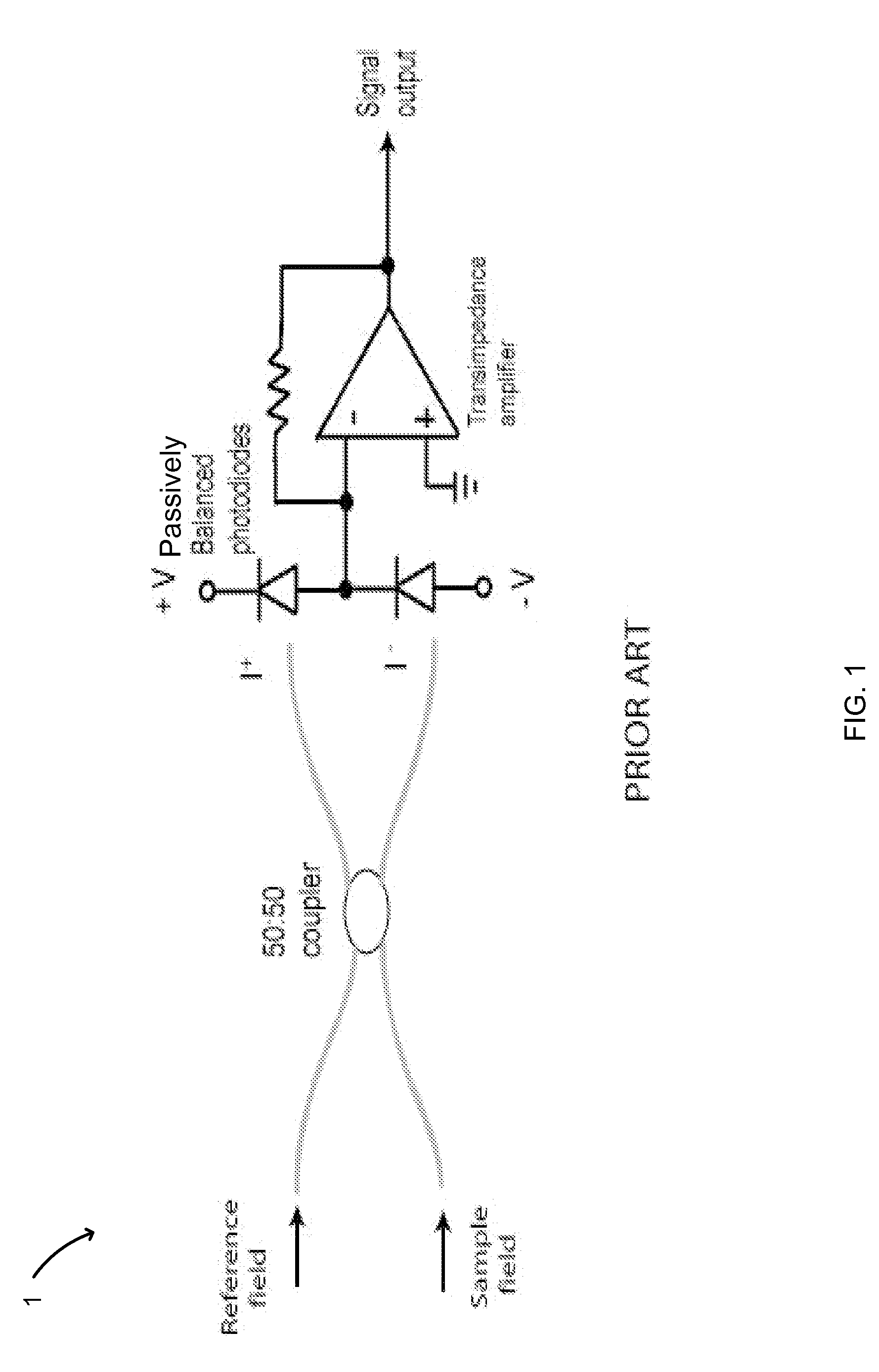Intensity Noise Reduction Methods and Apparatus for Interferometric Sensing and Imaging Systems
a technology of interferometry and noise reduction, applied in the field of sensing and imaging, can solve the problems of limited operation and high cost of available auto-balancing photoreceivers, and achieve the effect of reducing noise, actively suppressing wideband (dc—250 mhz) noise, and not degrading signal quality
- Summary
- Abstract
- Description
- Claims
- Application Information
AI Technical Summary
Benefits of technology
Problems solved by technology
Method used
Image
Examples
Embodiment Construction
[0036]The following description refers to the accompanying drawings that illustrate certain embodiments of the invention. Other embodiments are possible and modifications may be made to the embodiments without departing from the spirit and scope of the invention. Therefore, the following detailed description is not meant to limit the present invention. Rather, the scope of the present invention is defined by the appended claims.
[0037]Laser intensity noise plays an important role in frequency-domain optical coherence tomography (FD-OCT). FD-OCT can employ a rapidly tuned laser source to measure light backscattered from a sample at different optical delay times. Two-dimensional images of reflectivity versus depth at a resolution of 5-15 μm can be acquired from a scattering volume at frame rates exceeding 100 frames / s. FD-OCT has been applied widely in ophthalmology, cardiology, and other fields of medicine.
[0038]FIG. 2 shows the optical configuration of an FD-OCT system 5. Light from ...
PUM
 Login to View More
Login to View More Abstract
Description
Claims
Application Information
 Login to View More
Login to View More - R&D
- Intellectual Property
- Life Sciences
- Materials
- Tech Scout
- Unparalleled Data Quality
- Higher Quality Content
- 60% Fewer Hallucinations
Browse by: Latest US Patents, China's latest patents, Technical Efficacy Thesaurus, Application Domain, Technology Topic, Popular Technical Reports.
© 2025 PatSnap. All rights reserved.Legal|Privacy policy|Modern Slavery Act Transparency Statement|Sitemap|About US| Contact US: help@patsnap.com



